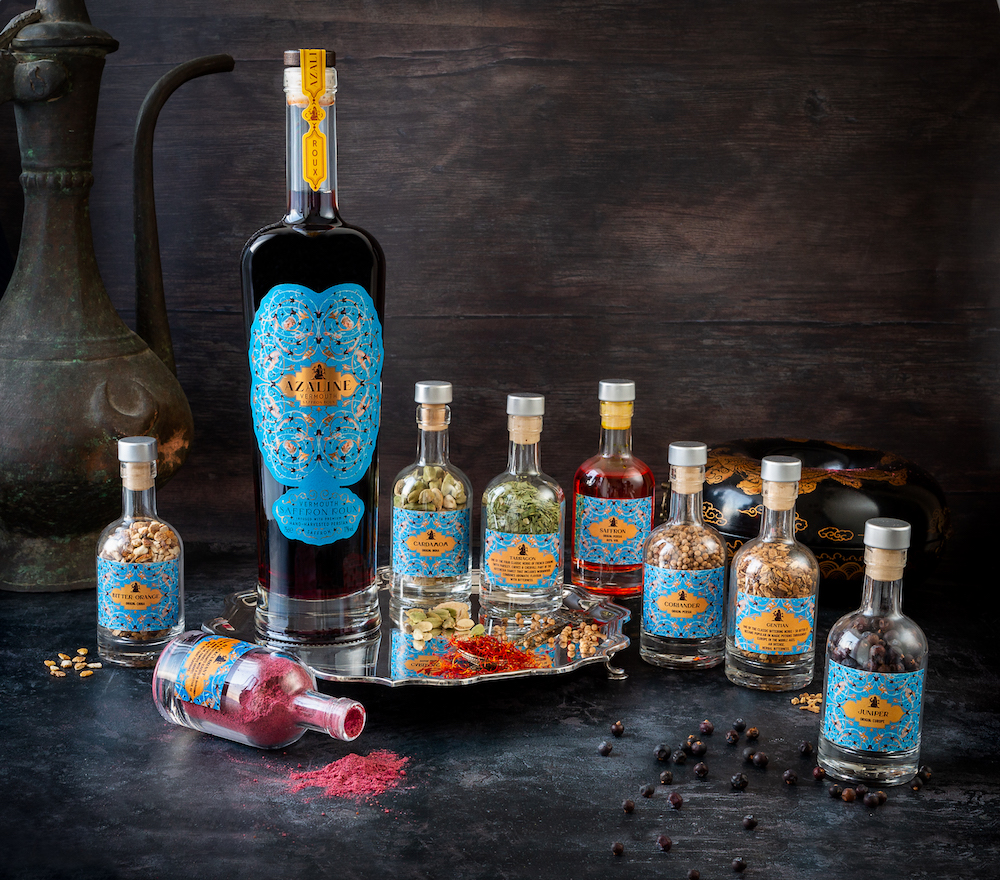Vermouth is stepping forward in the drinks scene, from the back of the top shelf to becoming a best seller. Impressive considering that bars have barely been open this past year. But as more and more people have turned to making their own cocktails during lockdown, vermouth has been one of the winners of the pandemic drinks trolley.
“I’ve seen our vermouth sales in terms of value and volume increase over 130% in the past year!” says Dawn Davies MW, buyer for The Whisky Exchange (an online specialist drinks retailer with over 9,000 spirits on the books). “I do really believe that vermouth is on an upward trajectory. When lockdown happened people started making cocktails, and people started really experimenting and buying and trying different vermouths.”
So, what is vermouth?
Put simply vermouth is an aromatised fortified wine that has to have artemisias bitters (commonly wormwood) in it but can be flavoured with many other botanicals too. It is by no means a new drink, it has been made (in various forms) for over 3,500 years as a medicinal drink. The Shang dynasty of China were making similar medicinal drinks since 1250 BC; Pliny the Elder was writing about it during the days of the Roman Empire; but it was really the modern Italians who brought it up to speed in the late 19th century with the appearance of vermouth cocktails.

Bond likes his shaken, not stirred
The golden age for vermouth came during the 1960s and 1970s, helped by Sean Connery’s famous James Bond moment in which he asked for his Martini “shaken not stirred” in Dr No in 1962. Since then Vermouth (and mainly Martini) has been a mainstay of bars around the world. But it is only really in the last few years that a trend for premium quality Vermouth and craft Vermouths has really kicked off.
The leap in quality that we’ve possibly seen is more due to the greater number of winemakers now making vermouth on the side. And so the quality of grapes going into vermouth is far greater than it has been before. “This is where I’m really getting excited about vermouth, is with brands like Regal Rogue and Belsazar,” says Dawn, who led me and some other wine writers from Circle of Wine Writers in a seminar tasting through a selection of six of her favourite vermouths at the moment. “Winemakers that are going out and getting really good quality grapes, and organic grapes. It’s the brave new world of vermouth!”
Greater experimentation with botanicals, and better knowledge of how to incorporate them, has also changed the face of vermouth. Although having one bitter from the artemisias family is obligatory, the other botanicals can range as far as your imagination can. From coriander and chamomile to mace and marjoram!
During my vermouth exploration last month, one of the best tasting experiences came at the hand of Steve Drawbell, the creator and owner of Azaline vermouth — a new ‘super premium’ vermouth just being launched in the UK. After over a decade as a ‘drinks innovator’ working with large drinks companies creating new drinks and innovations, he has branched out on his own to make the sort of vermouth he’s always dreamed of. Recruiting the help of renowned French producer Gabriel Bouidier (best known for their Creme de Cassis de Dijon), the base of Azaline is Pinot Noir from Burgundy. You get a certain note of raspberries and cherries on the final vermouth which clearly comes from this Pinot Noir base, but this is only one of the many layers of this complex drink.

“We travel along the silk route with the eight botanicals we have chosen for Azaline,” explained Steve over a Zoom tasting, in which I was kitted out with all eight individual botanical elements and a map detailing where they are each sourced — from Persia, India, China and around Europe. It was fascinating to break down the elements to actually get an understanding of how this complex crescendo of flavours and aromas is built up in the process of making the vermouth.
From the spicy and exotic Persian coriander; and the fresh and citrus-y notes of pine in the juniper; to the heady warm bitter orange from China; and the dusty, sweet tarragon notes; or the spicy, incense-like aromas of cardamom; bitter, herbal gentian from the Alps; and woody notes of blackcurrant leaves, there was a lot to discover. But the key part of the identity of Azaline, and certainly its most luxurious quality, is the abundance of warming and exotic saffron notes, which is distilled from hand-harvested flowers picked in the legendary saffron fields of Persia. The final product is definitely one of the most memorable vermouths I’ve tasted, and certainly by breaking down its components this way I had a greater appreciation of the work and process that goes into it.
What excited me most about tasting these vermouths with Steve and Dawn last month is the world of aromas it opened up. As a wine taster, I often fall into the trap of describing most wines of tasting of red berries or citrus. You can get into an aroma recognition rut! But tasting the wild and wonderful world of botanicals in vermouth, within a fortified wine setting, is a really delicious and geeky opportunity to challenge your schnoz and tantalise your palate.
Suffice to say, I’ll be staying on the vermouth train as we choo choo out of lockdown!
Recommended vermouths to buy
Azaline vermouth, Burgundy 17% £24.99 (Master of Malt, Gerry’s)
A sensuous red vermouth made from a base of Burgundian Pinot Noir but the real star here is the saffron which draws you into a rather exotic blend of heady spice aromas with cardamon, orange peel, tarragon and juniper rising to the fore. Beautiful alone or with tonic, but I also found it delicious in a Negroni and Boulevardier!
La Quintinye Vermouth Royal Extra Dry, France 17% £21.45 (The Whisky Exchange)
This French vermouth was filled with gorgeous notes of lavender, roses, rosemary and citrus peel, which along with 22 other botanicals go into making it. Made from Pineau de Charentes and the juice of Ugni Blanc (which is used for Cognac). I loved this and am eager to try the rest of the range. Another one for Martini or with ice and soda water.
Regal Rogue Wild Rose Vermouth, Australia 16.5% £17.95 (The Whisky Exchange)
Pretty as a peach, this pink vermouth is made with organic Sauvignon Blanc and Semillon along with a selection of organic botanicals which are sourced sustainably and from indigenous communities. A slightly sweeter style with notes of ripe strawberries, rhubarb, candy floss and roses — this is really pretty vermouth and wouldn’t go amiss in a white wine spritzer, sparkling or still.
Vya Whisper Dry Vermouth, Quady, USA, 17% £19.75 (The Whisky Exchange)
This vermouth from the USA was made with a base of orange muscat which gives it a nice grapey and floral aroma, while it packs more of a citrusy-salty punch in the palate. Dry, saline and elegant, this is certainly a style I’d love to try with a dry gin martini.
Vermouth Tips
- Don’t keep it for more than 3 weeks, and do keep it in the fridge
- French Vermouth tends to be drier and crisp in style; Italian Vermouth is typically rounder but with a vein of acidity; Spanish Vermouth is normally the fatter, more voluptuous of the European Vermouths.
How to drink vermouth
- Straight, chilled or with some ice.
- A vermouth spritz! Try vermouth and tonic or vermouth with soda water. With a slice of lemon or orange, or maybe rosemary. Play with the botanicals in the vermouth!
- In a Negroni: equal parts of gin, red vermouth and Campari.
- In a Boulevardier: equal parts of American whisky, red vermouth and Campari.
- Try a Germano Mexicano: two parts pink vermouth, one part mezcal, one part lime juice, a dash of agave syrup

